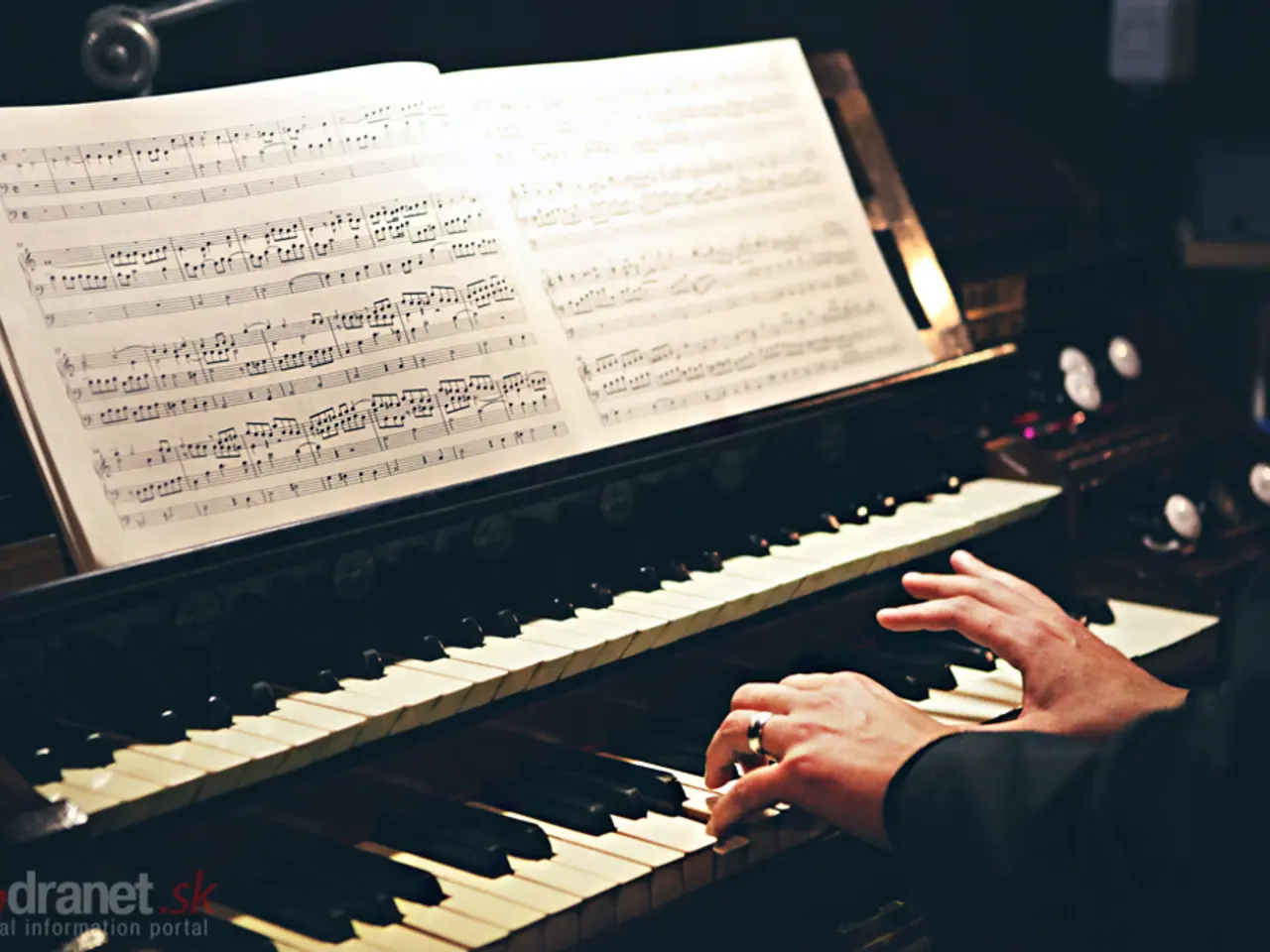Technique for playing piano keys
In the world of piano playing, the importance of accurate fingering cannot be overstated. Whether you're a beginner or an intermediate pianist, nailing the right fingering is key to a piece's performance.
For beginners, understanding the concept of finger numbers is essential. Finger numbers, with the thumb as number 1 and the pinky as number 5, form the basis of piano fingering. Simple exercises, such as playing single notes with each finger individually up and down the keyboard, can help develop finger independence and strength.
Utilizing free piano tutorials available online, like those from Hoffman Academy, can be a great way to learn songs and techniques step-by-step. Teaching directional reading by finger number, note name, and interval also helps in understanding fingering patterns.
As pianists progress, they encounter more complex pieces and technical work like scales and arpeggios. Here, the focus shifts to identifying challenging passages and practicing them slowly to ensure each finger plays deep into the key bed, promoting evenness. Adding accents to weaker fingers can also improve awareness and control, with the accents rotated across different fingers to maintain overall balance.
Gradually increasing speed using a metronome and incorporating exercises that target finger independence, such as Hanon exercises or finger stretches, can further enhance overall technique. Renowned exercises from Czerny's piano methods are also beneficial for improving finger technique and dexterity.
Regardless of skill level, it's crucial to make the correct fingering solid and consistent while practicing. This process can be time-consuming, but it's a fundamental aspect of piano learning. Once the right fingering is found, it should be consistently practiced until it becomes natural and flawless.
It's important to note that a manual for "the correct fingering" does not exist because it is personal and depends on the pianist's hand shape and the score's indications. Consistency in fingering is vital to avoid awkward twists and movements that can negatively impact the performance.
In conclusion, teaching and learning accurate piano fingering requires a combination of practice techniques, understanding of finger placement, and reinforcement exercises. By combining these methods, both beginners and intermediates can develop accurate piano fingering skills effectively.
For intermediates, consistent practice is essential to master challenging passages and technical work, such as scales and arpeggios, promoting evenness in finger play and ensuring each finger plays deep into the key bed. Fashion-and-beauty tips, like keeping fingernails short and well-manicured, can enhance not only appearance but also the overall performance.
Regarding a composer, their lifestyle and approach can greatly influence a piece's music, rhythm, and tonality. As a result, studying composers' biographies and the historical context of their works can offer valuable insights into understanding a piece's intended style and interpretation.
Lastly, engaging with entertainment, such as watching interviews or documentaries about pianists and their music, fosters appreciation and provides inspiration for composing, performing, or simply enjoying piano music as a beginner or an intermediate pianist in one's lifestyle.




